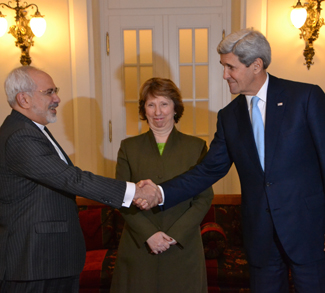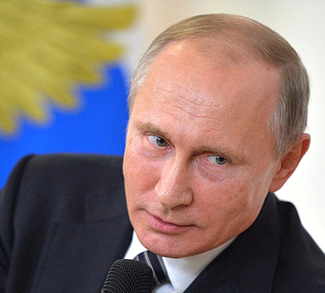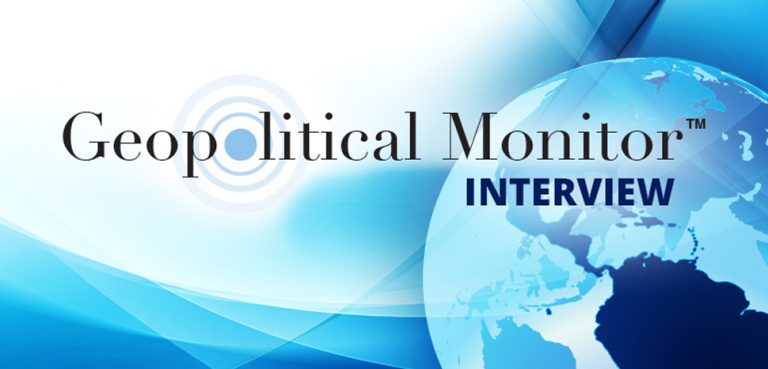A new Cold War knocks on our doors, suddenly. Why so? How did it previously cease?
The end of the Cold War came abruptly, overnight.
Many in the West dreamt about it, but nobody really saw it coming. The Warsaw Pact, Red Army in DDR, Berlin Wall, DDR itself, Soviet Union – one after the other, vanished rapidly, unexpectedly. There was no ceasefire, no peace conference, no formal treaty and guaranties, no expression of interests and settlement. Only the gazing facial expression of Soviet Foreign Minister Eduard Shevardnadze, who circles around and unconvincingly repeats: “We now better understand each other.”
On the contrary, Bush (the 41st US president) calmly diagnosed: “We win, they lose!” His administration immediately declared that US policies, including all military capabilities, will remain unchanged but with a different pretexts – to respond to the ‘technological sophistication of the third world powers’ and to ‘radical nationalism’ (meaning any indigenous emancipation). The world-is-flat mantra saw the non-West rest still enveloped in the Huntingtonian clash. Hence, the so-called normative revolution from the Atlantic followed shortly, in which the extensive (assertive) rights were self-prescribed on the global south. Thus, the might-makes-right interventions were justified through the new (de facto imperial) doctrines: humanitarian intervention, R2P (incl. Kouchner-Lévy ‘bombing for a noble cause’), doctrine of preemption, uninhabited access to or beyond the grand area, as well as the so-called Afroasia forward deployment, as a sort of the enlarged Brezhnev and Monroe doctrines combined together, etc.
Simultaneously, Washington’s darling, Francis Fukuyama, published his famous article The End of History? and the book which followed. To underline how sure he was about that claim, he even dropped the question mark in the title of the book.
Was this sudden meltdown of the Soviet giant and its Day After intrinsic or by design?
Brutality respected?
The generous support, the lavish and lasting funds that Atlantic-Central Europe enjoyed in the form of Marshall Aid has never reached the principal victim of WWII – Eastern Europe. Despite the weak ethical grounds, this was due to ideological constrains in the post-WWII period. Total WWII devastation of the East and their demographic loss of 36 million people (versus only 1.2 million in the West), was of no help.
Moreover, only eight years after the end of WWII, the West brokered the so-called London Agreement on German External Debts (also known as the London Debt Agreement or Londoner Schuldenabkommen). By the letter of this accord, over 60% of German reparations for the colossal atrocities committed in both WW were forgiven (or generously reprogrammed) by their former European victims, including – quite unwillingly – several Eastern European states. The contemporary world wonder and the economic wunderkind, Germany that dragged world into the two devastating world wars, is in fact a serial defaulter which received debt relief like no one else on the globe – four times in the 20th century (1924, 1929, 1932 and 1953).
Despite all the subsidies given to the West, the East recovered remarkably fast. By the 1950s and 1960s, many influential western economists seriously considered communism as better suited for economic advancements, along with a Soviet planned economy as the superior socio-economic model and winsome ideological matrix.
Indeed, impressive Soviet results were a living example to it: A backward, semi-feudal, rural country in 1920s, has won WWII and in parallel it evolved into a highly industrialized and urbanized superpower – all that in just 30 years. Spain needed two centuries (and never completed), Holland 130 years, the UK 110, Germany 90, Japan 70 years to revolve from a backward agricultural cultivator into an industrial giant. Moscow achieved that in only 30-35 years, all alone. Thus, by the mid-1950s – besides its becoming a nuclear power – the Soviet Union was a pioneer of cosmos exploration, sending a woman into orbit while many in the West still struggled with elementary gender equality – this was an ethical and technological blaster. Morality of communist narrative as well as its socio-economic advancements appealed globally.
Master-blaster
If all the above is true, why then did the Soviet Union collapse? Was it really a bankruptcy caused by the Afghan intervention and its costly space program? And finally, if the U.S. collapsed earlier with the so-called Nixon shock, why did America become stronger afterwards, while after the Gorbachev-era bankruptcy of the Soviet Union, the Russian historical empire melted away so rapidly?
There are numerous views on it. Still, there is nothing conclusive yet – neither in the form of a popular nor scientific consensus.
Some years ago, I had the honor to teach at the famous Plekhanov University of Economics in Moscow. It was a block-week with students of the Plekhanov’s elite IBS program. Twelve days in Moscow proved to be an excellent opportunity to ask these questions to some of the most relevant economic authorities among academic colleagues.
The line of answers was quite different to anything I’ve usually heard or read in the West. Muscovites claimed that right after Nixon shock, the Soviet Politburo and Gosplan (the Soviet Central Planning Economic Body – overseeing the entire economic performance of the Soviet Union and, indirectly, its satellites) sat jointly in an extensive closed session. They debated two items only:
- Could we prevent chaos and global instability by filling the gap after the collapse of the United States (and its eventual partition into 4-6 entities). Meaning to put the allied countries – previously under the US sphere of influence – under the SU’s effective control.
- Could we viably deter Chinese economic (and overall Asia’s socio-demographic and politico-military) advancement alone, without the help of the US (or its successors) and its Western satellites.
After much debating, answer to both questions was a unanimous NO.
Consequently, the logical conclusion was: The Soviets need to save the U.S. as to preserve balance of power. Without equilibrium in world affairs, there is no peace, stability, and security over the long run – a clear geostrategic imperative.
Indeed, right after the Nixon shock, an era of détente has started, which led to the Helsinki process and its Decalogue (that remains the largest and most comprehensive security treaty ever brokered on our planet). The U.S. was left to re-approach China (so-called Triangular engagement). Soon after, it recognized the Beijing China (One-China policy), and closed the chapter on Vietnam.
Simultaneously, Americans (re-)gained a strategic balance elsewhere, like in Latina America and (horn of and western) Africa, with a brief superpowers’ face-off in the Middle East (Yom Kippur War) which – though bloody and intensive – did not damage the earlier set balances.
Why goodbye?
Why, then, the instability in today’s world?
Apparently, Washington did not really consider these two questions when it was their turn. Soviet planetary stewardship was misused and Gorbachev’s altruism was ridiculed. As a consequence of today, the edges of the former Soviet zone – from Algeria to Korea and from Finland to the Balkans – are enveloped in instabilities. On top of it, the Chinese powerhouse is unstoppable: Neither of the Western powers alone nor a combination of them is able to match the Sino-giant economically. Asia, although the largest continent, is extremely bilateral. Its fragile security structures were built on the precondition of a soft center.
A bear of permafrost worried about global balance and was finally outfoxed, while a fish of warm seas unleashed its (corporate) greed and turned the world into what it is today: a dangerous place full of widening asymmetries and unbalances. Climate, health, income, access to food and water, safety and security – each regionally and globally disturbed. Exaggerated statement?
For the sake of empirical test, let us apply the method of sustainability on this short story of 21st century geopolitics. As per tentative definition, Sustainable Development is any development which aims at the so-called 3Ms: the maximum good for maximum species, over maximum time-space span – comprehensive stewardship.
How did our superpowers behave? Was our 3M better off before or after 1991?
The UN High Commissioner for Refugees Filippo Grandi (in his just released Global Trends Report) notes the unprecedented asymmetries of today’s world. The facts are as heart-freezing as my Moscow winter years ago. The UNHCR notes: “Every 113th person on this planet is displaced. Of the 65.6 million people forcibly displaced globally, 10.3 million became displaced in 2016… This equates to one person becoming displaced every 3 seconds – less than the time it takes to read this sentence.”
“You are either with us or against us” is a famous binary platform of Bush (the 43rd US president). Indeed, our planetary choice is binary but a bit broader.
An End of history in re-feudalization or a dialectic enhancement of civilization. Holistic or factionary. Cosmos (of order) or chaos (of predatory asymmetries) – simple choice.
The opinions, beliefs, and viewpoints expressed by the authors are theirs alone and don’t reflect any official position of Geopoliticalmonitor.com.




